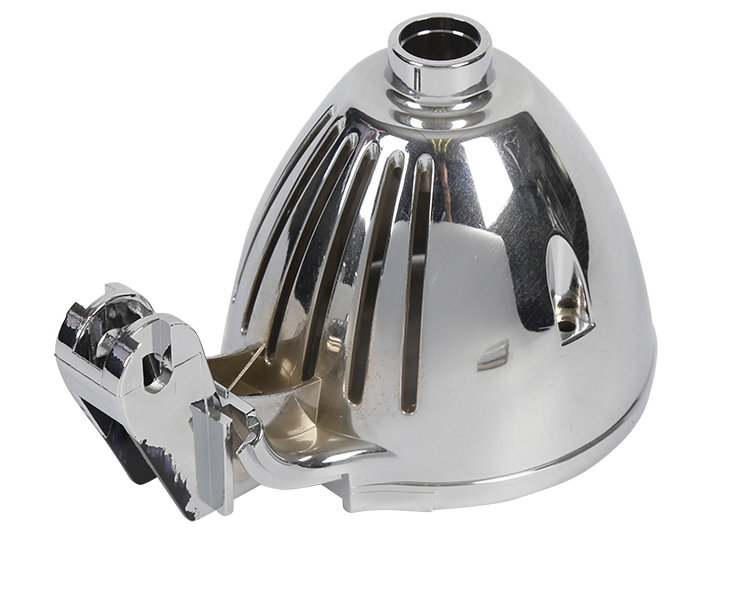There are two common electroplating processes for plastic products: water electroplating and vacuum ion plating.

Vacuum ion plating is also known as vacuum coating. The practice of vacuum plating is now a relatively popular
method, the resulting product has a strong sense of metal and high brightness, and compared with other coating methods,
The cost is low and the pollution to the environment is small, and it is now widely used in various industries.
Vacuum plating is applicable to a wide range of products, such as ABS material, ABS+PC material, and PC material.
At the same time, the unit price is more expensive than water electroplating due to its complex process flow, high environment, and equipment requirements.
Now a brief introduction to its process flow: product surface cleaning –> antistatic –> spray primer –>
Baking primer–>Vacuum coating–>Spray topcoat–>Baking topcoat–>Packaging.
The general practice of vacuum electroplating is to spray a layer of primer on the material first, and then do the electroplating. because
The material is a plastic part, air bubbles and organic gases will remain during injection molding, and will be left when placed.
Inhale moisture from the air. In addition, because the plastic surface is not flat enough, the direct plating process
The surface of the piece is not smooth, the gloss is low, the metallic feeling is poor, and there will be air bubbles, blisters, etc.
situation. After spraying a coat of primer, it will form a smooth and flat surface, and prevent
The generation of bubbles and blisters existing in the plastic itself enables the effect of electroplating to be exhibited.
Vacuum electroplating can be divided into general vacuum electroplating, UV vacuum electroplating, and special vacuum electroplating.
Techniques include evaporation, sputtering, gun color, etc.


